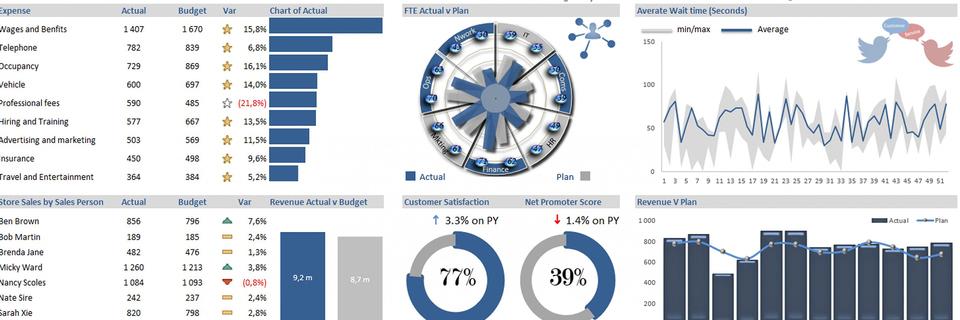Business Valuation Modeling MasterClass

Business Valuation Modeling MasterClass
Calculate and analyze valuation multiples
- Learn the most common multiples: EV/Revenue, EV/EBITDA, EV/EBIT, P/E
- Know when each type of multiple is appropriate to use
- Appreciate the drivers of equity and enterprise multiples
- Value a company using comparable company analysis
- Value a company using precedent M&A transactions
- Learn how to value a business using discounted cash flow techniques.
Complete Excel-based case studies and solutions as well as a PDF valuation reference guide that can be used while taking the course and downloaded to your computer for future reference.
- Calculate free cash flows to the firm and to equity
- Outline the main drivers of free cash flows
- Value a business using a two-stage DCF valuation model
- Learn how to calculate the cost of equity, cost of debt and the weighted average cost of capital.
- Calculate Beta in an Excel spreadsheet
- Calculate an organization's weighted average cost of capital (WACC)
- Create a football field chart to summarize the various valuation methods used in the analysis: Comps, Precedents, DCF
Allocating cash flow by investor type
corporate valuation modeling class online
Comparable company analysis
Learn how to build a Comps table and calculate all equity value and enterprise value ratios required to value a business.
Drivers of business valuation
Learn about the main drivers of free cash flow to the firm and business valuation in this course.
Who should take these modules?
This e-commerce/startup financial model course is designed anyone working in the Technology Media and Telecommunication (TMT) group in investment banking, Venture Capital, or planning to start their own business. Participants will learn to build a model from scratch, using industry-leading best practices and using one key set of assumptions to drive all valuation outputs.
By the end of the program, you will be able to take the skills you've learned and modify the Excel template to fit your own business. Every business is unique, which is why it's important to acquire the skills necessary to design your own model for your own business.
APPLICATIONS AND HANDS ON
Choose between three options:
- Option1 : Evaluating Startups / Financial Model & Valuation
- Option2: Evaluating Startups /Cluster: IT software and IT value-added startups
- Option3 : Evaluating Startups / Cluster : e Commerce Financial Model & Valuation
Option 1: Evaluating Startups / Financial Model & Valuation
Recommended Prerequisites
You are expected to have a beginner’s understanding of excel formulas your instructor will present all knowledge needed for taking Microsoft excel main formulas and simulation in hand
Financial Model - Income Statement
- Introduction
- Revenue to EBITDA
Financial Model - Balance Sheet
- Introduction
- Linking balance sheet items
- Subtotals and totals
Financial Model - Supporting Schedules
- Introduction
- Capital assets - opening balance and additions
- Capital assets - depreciation and closing balance FREE PREVIEW
- Debt schedule
- Completing the income statement
- Completing the balance sheet
Financial Model - Cash Flow Statement
- Operating cash flow
- Investing in cash flow
- Financing cash flow
- Change in cash and completing the balance sheet
Customer Metrics
- Calculating customer metrics
DCF Valuation
- Introduction
- Tax loss carry forward FREE PREVIEW
- Unlevered free cash flow
- DCF analysis
Charts & Graphs
- Introduction
- Linking the chart data
Qualified assessment
Option 2: Evaluating Startups / Cluster: IT software companies
Benchmarking software applications and evaluating their models through an ISMS
An ISMS is a systematic approach to managing sensitive company information so that it remains secure. It includes people, processes and IT systems by applying a risk management process.
It can help small, medium and large businesses in any sector keep information assets secure. Management system standards
Providing a model to follow when setting up and operating a management system, find out more about how MSS work and where they can be applied.
- Security techniques
- Information security management systems
- Overview and vocabulary
- Security techniques
- Information security management systems
- Requirements
- Information technology
- Security techniques
- Code of practice for information security controls
- Visit the ISO Store to buy more standards
Option 3: Startup / e-Commerce Financial Model & Valuation course evaluation
Cluster; e-Commerce / Startup Financial Model Course Overview
Master the art of building a financial model and valuing an e-Commerce Startup. In this course, you will learn to build a startup financial model from scratch complete with assumptions, financials, valuation, and output charts. We will look at how much money this business has to raise based on its business plan and model out each year of cash flow
Introduction to e-Commerce
- Key valuation metrics
- Preview of completed financial model
- Financial Model - Assumptions Section
- Overview of key assumptions
- Traffic, conversion, and orders
- Customers
- Expenses
- Balance sheet items
Startup financial model course objectives
By the end of this startup financial model course you'll be able to:
- Understand key startup / e-commerce terms and definitions that are used in the industry
- Understand the e-commerce industry, business models, players, etc
- Input key assumptions into a startup financial model in the assumptions section
- Calculate an order buildup and customer base schedule which will be used to forecast revenue
- Build the three financial statements (income statement, balance sheet, cash flow statement) based on the business plan
- Perform a discounted cash flow DCF valuation of the startup / eCommerce business
- Output relevant graphs to illustrate the cash flow, key metrics, and overall investment opportunity
The e-commerce financial model templates included in this course if yours for download and can be used for your own business.
